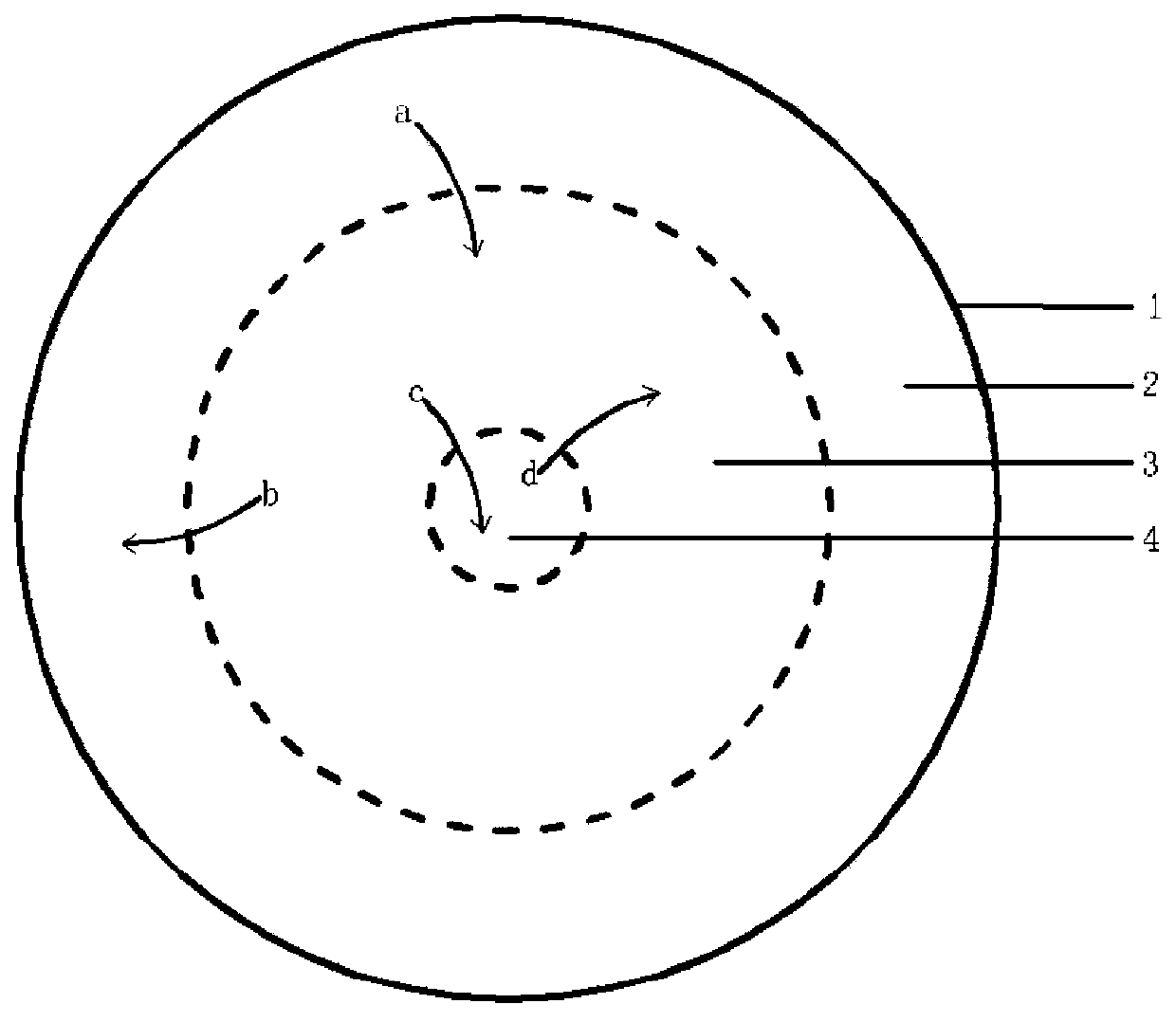Method for realizing synchronous nitrification and denitrification nitrogen removal by utilizing immobilized microorganism technology
A technology of immobilized microorganisms and synchronous nitrification, applied in chemical instruments and methods, biological water/sewage treatment, water pollutants, etc., can solve the problems of low batch reuse, low denitrification efficiency, difficult promotion and application, etc. , to achieve the effect of reducing the number of structures, increasing reusable batches, and reducing operating costs
- Summary
- Abstract
- Description
- Claims
- Application Information
AI Technical Summary
Problems solved by technology
Method used
Image
Examples
Embodiment 1
[0063] Polyvinyl alcohol / sodium alginate-boric acid / calcium chloride embedding method immobilized microorganism technology to realize simultaneous nitrification and denitrification denitrification process of tannery wastewater. The specific steps are as follows:
[0064] 1. Preparation of embedding agent
[0065] Slowly add 13g of polyvinyl alcohol into 150mL of 100°C distilled water while stirring, stir until completely dissolved; in another beaker, slowly add 1.6g of sodium alginate into 150mL of 85°C distilled water while stirring, fully stir until completely dissolved; Under the condition of sufficient stirring, slowly pour the polyvinyl alcohol solution into the sodium alginate solution, and mix for 30 minutes to obtain the embedding agent; stop heating, cool the embedding agent to room temperature, and set aside.
[0066] 2. Preparation of crosslinking agent
[0067] Add 2% (W / V) calcium chloride to the saturated boric acid solution, stir to dissolve, use saturated sodi...
Embodiment 2
[0078] Carrageenan-potassium chloride embedding method immobilized microorganism technology to realize petrochemical wastewater simultaneous nitrification and denitrification denitrification process, the specific steps are as follows:
[0079] 1. Preparation of embedding agent
[0080] In a beaker, slowly add 4.43g of carrageenan to 150mL of 90°C distilled water while stirring, stir well until completely dissolved to obtain the embedding agent, keep warm at 50-55°C, and set aside.
[0081] 2. Preparation of crosslinking agent
[0082] Prepare 2-4% (W / V) potassium chloride solution, and put it into the refrigerator to refrigerate to 6°C.
[0083] 3. Preparation of bacterial suspension
[0084] Take the nitrifying bacteria agent culture solution and the denitrification bacteria agent culture solution obtained by enriching activated sludge respectively, centrifuge at 8000rpm for 10min, discard the supernatant, suspend the bacterial cell sediment with sterile water, centrifuge a...
Embodiment 3
[0093] The comparison between simultaneous nitrification and denitrification denitrification by sodium alginate-calcium chloride embedding method immobilized microorganism technology and traditional A / O process denitrification, the specific steps are as follows:
[0094] 1. Preparation of embedding agent
[0095] In a beaker, slowly add 5g of sodium alginate to 150mL of 85°C distilled water while stirring, stir well until it is completely dissolved to obtain the embedding agent; stop heating, cool the embedding agent to room temperature, and set aside.
[0096] 2. Preparation of crosslinking agent
[0097] Prepare a 5% (W / V) calcium chloride solution, and put it in a refrigerator to refrigerate to 4°C.
[0098] 3. Preparation of bacterial suspension
[0099] Take the nitrifying bacteria agent culture solution and the denitrification bacteria agent culture solution obtained by enriching activated sludge respectively, centrifuge at 8000rpm for 10min, discard the supernatant, s...
PUM
| Property | Measurement | Unit |
|---|---|---|
| particle diameter | aaaaa | aaaaa |
| density | aaaaa | aaaaa |
| density | aaaaa | aaaaa |
Abstract
Description
Claims
Application Information
 Login to View More
Login to View More - R&D
- Intellectual Property
- Life Sciences
- Materials
- Tech Scout
- Unparalleled Data Quality
- Higher Quality Content
- 60% Fewer Hallucinations
Browse by: Latest US Patents, China's latest patents, Technical Efficacy Thesaurus, Application Domain, Technology Topic, Popular Technical Reports.
© 2025 PatSnap. All rights reserved.Legal|Privacy policy|Modern Slavery Act Transparency Statement|Sitemap|About US| Contact US: help@patsnap.com

